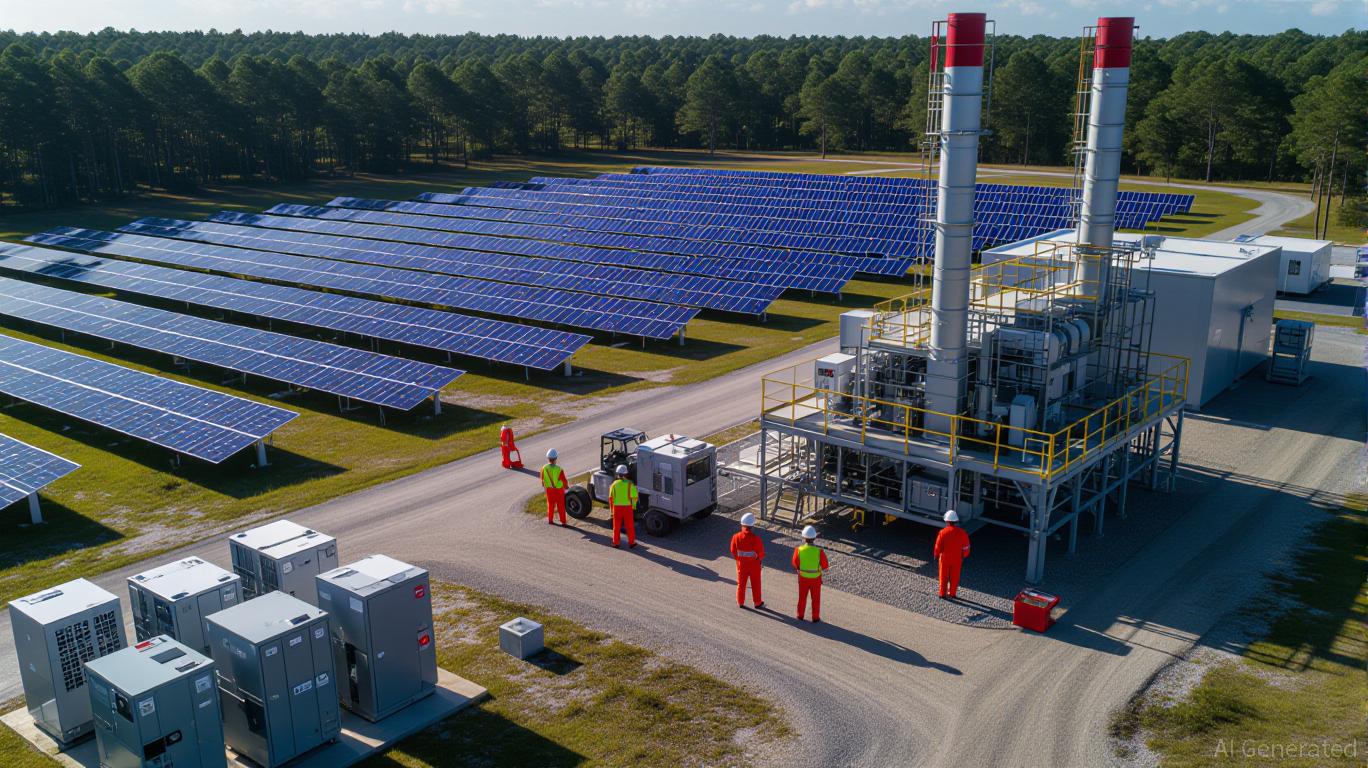
Georgia Power’s 2025 Integrated Resource Plan (IRP) has ignited a critical debate about the role of natural gas in the decarbonizing energy landscape. As the state grapples with a projected 8,500 MW surge in electricity demand—driven largely by data centers, EV manufacturing, and industrial growth—the utility’s strategy balances the immediate need for reliability with long-term climate goals. For infrastructure investors, the question is not merely about the viability of gas in the 21st century but about the nuanced interplay of regulatory oversight, technological innovation, and market dynamics that will shape returns over the next decade.
The IRP: A Hybrid Energy Strategy
Georgia Power’s IRP, approved by the Georgia Public Service Commission (PSC) in July 2025, envisions a 1,500 MW expansion of battery energy storage systems (BESS) by 2030, alongside 4,000 MW of renewable resources. Yet the plan also includes a significant reliance on gas-fired generation, including upgrades to Plant McIntosh and extended operations for coal plants like Bowen and Scherer through 2034–2038. This hybrid approach reflects the utility’s acknowledgment of gas as a transitional bridge to a cleaner grid, given its flexibility to ramp up quickly and its current cost competitiveness compared to alternatives like hydrogen or advanced nuclear.
The data center boom, which accounts for 80% of new power demand, underscores the urgency. These facilities require 24/7, high-quality electricity, a need that renewables alone cannot yet meet without robust storage and backup. Georgia Power’s strategy to co-fire natural gas at coal plants and deploy fast-start combustion turbines is a pragmatic response to this challenge. However, it raises a critical question: Can gas infrastructure remain relevant in a world increasingly focused on net-zero emissions?
The Gas Dilemma: Bridge or Burden?
Natural gas’s role in energy transitions is fraught with paradox. On one hand, it emits less CO2 than coal and can complement intermittent renewables. On the other, it locks in methane leakage risks, regulatory uncertainty, and the potential for stranded assets if decarbonization accelerates. For Georgia Power, the risk lies in overbuilding gas capacity that may become obsolete as battery costs fall and renewable integration improves.
The PSC’s stipulated agreement—requiring quarterly load updates and revised forecasts in 2025 and 2027—provides a mechanism to recalibrate the IRP. This adaptability is crucial. If data center growth slows or battery storage becomes cheaper than gas peaking plants, the utility could pivot. Conversely, if industrial demand outpaces expectations, gas will remain a necessary pillar. Investors must assess whether Georgia Power’s gas investments are hedging against uncertainty or doubling down on a vulnerable asset class.
Opportunities and Risks for Infrastructure Investors
For investors, Georgia Power’s IRP highlights three key areas:
1. Battery Storage and Domestic Manufacturing: Georgia’s Inflation Reduction Act (IRA)-fueled battery boom, led by SK On, Hyundai, and LG Energy Solution, is reducing BESS costs and creating a domestic supply chain. Companies like Tesla () and LG Energy Solution are positioned to benefit from this trend.
2. Gas Infrastructure with Exit Flexibility: Gas-fired plants with modular designs or hybrid capabilities (e.g., co-firing with hydrogen) may retain value longer. Investors should scrutinize projects with clear pathways to decarbonization, such as Georgia’s proposed hydrogen blending trials at Plant McIntosh.
3. Regulatory and Policy Exposure: The PSC’s oversight mechanisms are a double-edged sword. While they reduce overbuild risk, they also introduce uncertainty. Investors should monitor quarterly load reports and PSC rulings to gauge whether the utility’s gas strategy aligns with evolving climate policies.
Strategic RecommendationsDiversify Portfolios: Invest in a mix of gas infrastructure with storage and renewables. Prioritize companies with IRA incentives (e.g., 45X credits for battery manufacturing) and those adapting gas assets for hydrogen or carbon capture. Focus on Adaptability: Favor projects with modular designs or retrofit potential. For example, Georgia Power’s BESS deployments at retired coal sites (e.g., Hammond) demonstrate how legacy infrastructure can be repurposed. Engage with Policy: Advocate for clear timelines for gas phaseouts and incentives for storage innovation. The PSC’s requirement for updated load forecasts is a model for regulatory agility—a trend likely to spread. Conclusion
Georgia Power’s IRP is a microcosm of the global energy transition’s complexity. While gas remains a necessary bridge for now, its long-term viability hinges on technological progress and regulatory foresight. For infrastructure investors, the key is to balance the immediate reliability needs of a growing economy with the long-term imperative to reduce emissions. Those who position themselves at the intersection of storage innovation, adaptive gas infrastructure, and policy engagement will be best placed to navigate the uncertainties ahead.
